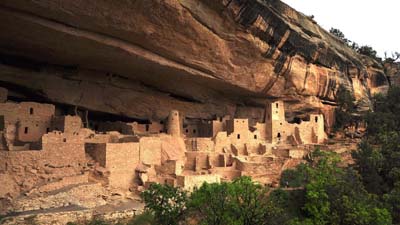Now that we’ve reached the summer solstice, Coloradans can get over 14 hours of sunlight a day! With so much sunshine to enjoy, Colorado is a great place to take advantage of solar energy resources to offset the financial and environmental costs of heating our homes.

Solar heating devices can be either passive or active. Renewable resources in Colorado (1981), published by the Colorado Office of Energy Conservation (now the Colorado Energy Office) explains the difference between the two types:
- Passive solar heating systems don’t use solar panels to collect energy – instead, these systems collect, store, and circulate heat from the sun’s warmth, maximizing a structure’s ability to heat and cool itself. Successful structures are often oriented towards the sun, with south-facing windows, thick walls and floors that retain heat, and venting to circulate the air. Passive solar heating has been used for thousands of years. In Colorado, we have great examples in the Ancestral Pueblo cliff dwellings in Mesa Verde National Park.
- Active solar heating systems use solar collectors and mechanical systems to collect and store heat from the sun to distribute it throughout the building. These systems are easier to incorporate into existing buildings and are also easier to control. Active solar heating systems are most cost-effective in cold climates with good solar resources – sound familiar?
If you’re interested in incorporating solar heating elements into your home, the Colorado State University Extension has been publishing resources on solar heating for decades:
- Active solar heating systems (1978) goes into detail about the different components of active solar heating and explains how these complex systems work in straightforward language.
- The sun-tempered superinsulated house (2008) provides more information about passive solar heating by explaining how to incorporate elements like window placement and air-tight drywall into our houses to use solar heat efficiently.
- Solar domestic water heating systems (1983) explains how to use solar energy specifically to heat water and provides tips for installing these systems, including the optimal angle for tilting a solar collector based on Colorado’s latitude.
Latest posts by Miranda Doran-Myers (see all)
- Colorado’s Governors: Ralph L. Carr - July 11, 2025
- Celebrating Colorado’s immigrant heritage - June 27, 2025
- Colorado’s Scenic and Historic Byways: Guanella Pass - June 6, 2025